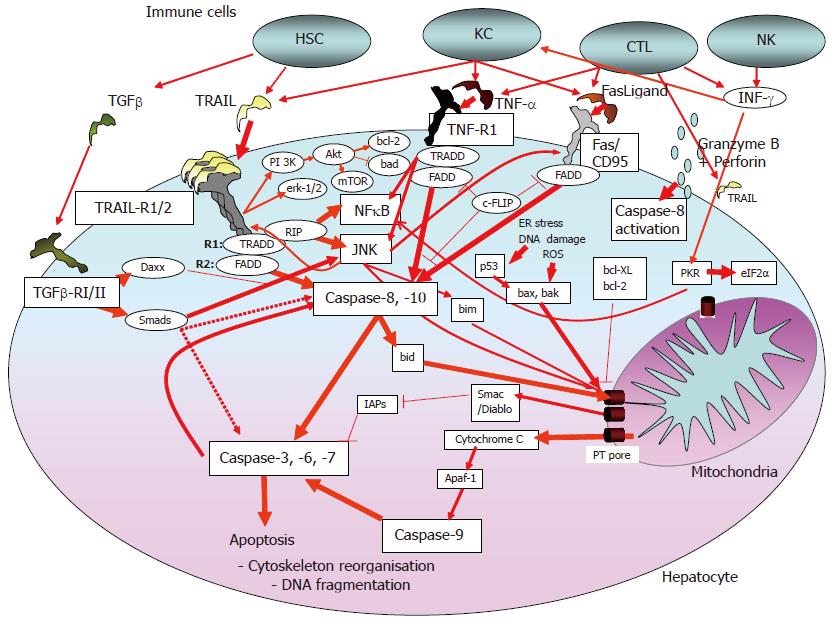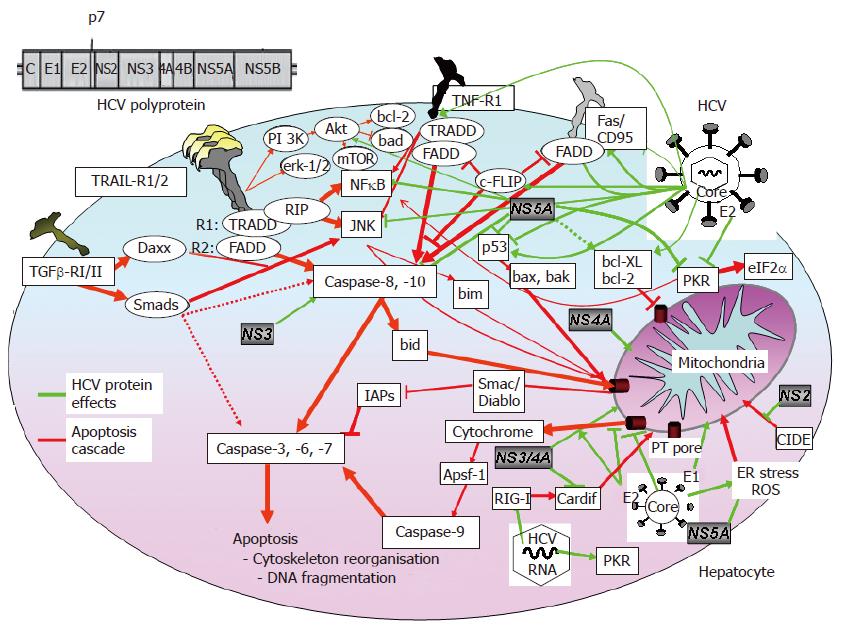Copyright
©2007 Baishideng Publishing Group Co.
World J Gastroenterol. Sep 28, 2007; 13(36): 4865-4872
Published online Sep 28, 2007. doi: 10.3748/wjg.v13.i36.4865
Published online Sep 28, 2007. doi: 10.3748/wjg.v13.i36.4865
Figure 1 Signal transduction pathway of apoptosis in hepatocytes.
Immune cells induce apoptosis in hepatocytes by death receptor ligands (TRAIL, TNFα, CD95Ligand, TGF-β) and granzyme B/perforin. Ligand-induced apoptosis activates caspase-8, whereas intrinsic apoptosis occurs via the mitochondrial permeability transition (PT) pore and activation of caspase-9. Caspase-9 and -8 activation converge in activation of the effector caspases-3, -6 and -7, resulting in irreversible apoptosis induction. HSC: Hepatic stellate cells; KC: Kupffer cells; CTL: Cytotoxic T-lymphocytes; NK: Natural killer cells.
Figure 2 Interference of HCV proteins with the apoptosis cascade.
Pro- and anti-apoptotic effects of HCV proteins converge at the mitochondria (e.g., NS2, NS3/4A, NS5A, E2, core), partly indirectly via p53 (NS5A, core) and activation of PKB/Akt, c-Jun kinase JNK (core) or NFκB (NS5A). HCV interacts directly with death receptors (core), the corresponding death receptor domains (FADD) and caspase-8 (NS5A). HCV double-strand RNA-activated protein-kinase R (PKR) induced signaling via RIG-I (retinoic acid inducible gene-I) and Cardif is directly (E2, NS5A) and indirectly (NS3/4A) disturbed.
- Citation: Fischer R, Baumert T, Blum HE. Hepatitis C virus infection and apoptosis. World J Gastroenterol 2007; 13(36): 4865-4872
- URL: https://www.wjgnet.com/1007-9327/full/v13/i36/4865.htm
- DOI: https://dx.doi.org/10.3748/wjg.v13.i36.4865














